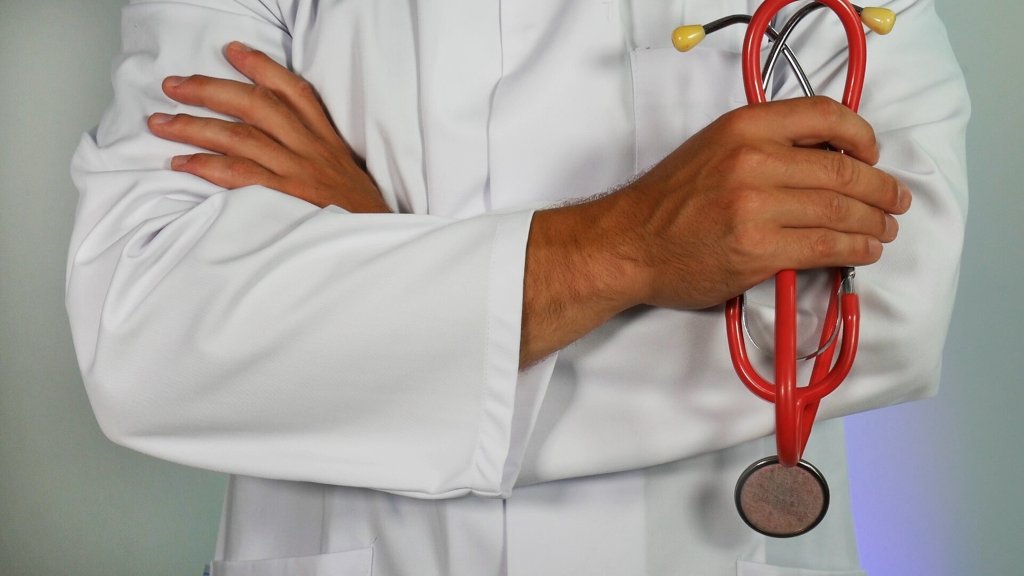People with MPS experience many bones and joint complications. Joint stiffness is common in all forms of the disease. All the joints become stiff and their movement may become limited. Specific features for each MPS disease are below, or use the side bar to navigate to each disease.
Bones and joints
MPS I Hurler, Hurler-Scheie and Scheie
Spine
The spine bones (vertebrae) of people with Hurler and Hurler-Scheie disease are poorly shaped resulting in a hump on the upper back called kyphosis. Some children with Hurler disease may occasionally experience skeletal pain which should be managed by a specialist. Nearly all children with Hurler disease will require spinal surgery or will wear a spinal support at some point.
Sometimes people with Hurler-Scheie or Scheie disease develop lower back pain, it is likely to happen due to slipping of lower spine bones (vertebrae) which is called spondylolisthesis. X-rays are normally used to diagnose or detect any problems that are present or likely to develop, and treatments usually involve spinal surgery or neck stability.
Joints
Joint stiffness does lead to limited movement, in the shoulders and arms, hips and knees. The limited movement can make everyday activities like getting dressed difficult. Joint stiffness can sometimes cause pain which may be relieved by warmth and painkillers, speak with your doctor to select the most suitable treatment. In some cases, people with MPS I may suffer from dislocated hips treatment should be managed by a specialist.
Many children with Hurler disease stand and walk with their knees and hips flexed. The feet are broad and may be stiff with the toes curved under, often the tight Achilles tendon may result in walking on toes. Sometimes children have ‘knock knees’ but this is very unlikely to need treatment until the child has stopped growing.
Hands
The shape of the hands is very noticeable, they are short and broad with stubby fingers which gradually become curved over or clawed. People with MPS I sometimes experience pain, weakness or loss of feeling in the fingertips, this is caused by thickening of the ligaments which causes pressure on the nerves. It is called carpal tunnel syndrome and can be relieved by an operation. An electrical test called a nerve conduction study can show whether carpal tunnel syndrome is the cause.
MPS II Hunter
Spine
The spine bones (vertebrae) of people with MPS II are poorly shaped resulting in a hump on the upper back called kyphosis but is usually mild and generally does not need treatment. Older children and adults with MPS II occasionally develop compression of the spinal cord due to thickening of the ligaments around the bones of the neck. X-rays are normally used to diagnose or detect any problems that are present or likely to develop, and treatments usually involve spinal surgery or neck stability.
Joints
There are usually significant problems with bone formation and growth. This leads to both bone and brain symptoms if nerves are compressed by bone. Joint stiffness does lead to limited movement, in the shoulders and arms, hips and knees. The limited movement can make everyday activities like getting dressed difficult. Joint stiffness can sometimes cause pain which may be relieved by warmth and painkillers, speak with your doctor to select the most suitable treatment.
Many children with MPS II stand and walk with their knees and hips flexed. The feet are broad and may be stiff with the toes curved under, often the tight Achilles tendon may result in walking on toes. Sometimes children have ‘knock knees’ but this is very unlikely to need treatment until the child has stopped growing.
Hands
The shape of the hands is very noticeable, they are short and broad with stubby fingers which gradually become curved over or clawed. People with MPS II sometimes experience pain, weakness or loss of feeling in the fingertips, this is caused by thickening of the ligaments which causes pressure on the nerves. It is called carpal tunnel syndrome and can be relieved by an operation. An electrical test called a nerve conduction study can show whether carpal tunnel syndrome is the cause.
MPS III Sanfilippo
People with MPS III tend to have fewer problems with bone formation and growth. As children get older the joints become stiff and their movement may become limited. The limited movement can make everyday activities like getting dressed difficult. Joint stiffness can sometimes cause pain which may be relieved by warmth and painkillers, speak with your doctor to select the most suitable treatment.
Some children with MPS III may suffer from dislocated hips but treatment may not be advisable or necessary. Many children with MPS III have periods of limping or apparent pain in their hips, an X-ray can confirm a condition called Perthes’ Disease. The changes seen are in fact very common with MPS III and are probably part of the bone disease that occurs in all children with the disease.
Many children with MPS III stand and walk with their knees and hips flexed. The feet are broad and may be stiff with the toes curved under, often the tight Achilles tendon may result in walking on toes. The shape of the hands is very noticeable, fingers of children with MPS III may become curved over or clawed and the arms may not be able to extend fully. There may be some limitation of movement in the large joints such as shoulders, elbows, hips or knees as the child grows.
Advice for professionals
We want to give you the tools to be able to learn about MPS, Fabry and related diseases in order for children with the condition to receive a faster diagnosis.
MPS IV Morquio
Spine
The neck region (cervical spine) is affected in MPS IV. Normally there is be a piece of bone called the ‘odontoid process’ sticking up between the second and first vertebrae and giving support as the head moves. In people with MPS IV this piece of bone may fail to develop resulting in the spinal cord being insufficiently protected. Sometimes one or more of the spine bones (vertebrae) will slip back in position, narrowing the spinal canal. The spine may be curved to one side, this is called scoliosis, hump on the upper back called kyphosis or a mixture of the two called kyphoscoliosis. Compression or squeezing of the spinal cord is a serious complication that requires careful clinical management. Chronic damage leads to a gradual loss of power in arms and legs and all people with MPS IV should be referred to an orthopaedic surgeon. The spine should be kept under regular review by an orthopaedic surgeon. If cervical instability is identified a recommendation to have a cervical fusion to prevent possible damage to the spinal cord may be made. The problem with the cervical spine can be corrected by an operation called a ‘cervical fusion’. It is essential to keep the neck in the correct position for three to four months after the operation.
Joints
Joint stiffness does lead to limited movement, in the shoulders and arms, hips and knees. The limited movement can make everyday activities like getting dressed difficult. Joint stiffness can sometimes cause pain which may be relieved by warmth and painkillers, speak with your doctor to select the most suitable treatment. In some cases, people with MPS IV may suffer from dislocated hips treatment should be managed by a specialist.
Many children with MPS IV stand and walk with their knees and hips flexed. The feet are broad and may be stiff with the toes curved under, often the tight Achilles tendon may result in walking on toes. Sometimes children have ‘knock knees’ but this is very unlikely to need treatment until the child has stopped growing. The ankles may be weak and turn inwards and because of weakened ligaments and tendons people with MPS IV often have flat feet.
Hands
The wrists are enlarged and curved round, they may become very loose and floppy as the tiny carpal bones fail to develop properly. This can lead to considerable loss of power in the hands
MPS VI Maroteaux-Lamy
Spine
The spine bones (vertebrae) of people with MPS VI are poorly shaped resulting in a kink, called a gibbous, which shows up on X-ray. A shorter neck causes restricted movement and occasionally spinal compression. Compression is caused by structural defects in the upper spine bones resulting in instability. Monitoring of brain signs and symptoms is necessary, as surgical treatment may be required to prevent complications.
Joints
There are usually significant problems with bone formation and growth with wide variation in the severity of problems even between affected siblings. Symptoms of the brain can occur if nerves are compressed through poor bone formation. Joint stiffness does lead to limited movement, in the shoulders and arms, hips and knees. The limited movement can make everyday activities like getting dressed difficult. Joint stiffness can sometimes cause pain which may be relieved by warmth and painkillers, speak with your doctor to select the most suitable treatment.
Hands
The shape of the hands is very noticeable, they are short and broad with stubby fingers which gradually become curved over or clawed. People with MPS VI sometimes experience pain, weakness or loss of feeling in the fingertips, this is caused by thickening of the ligaments which causes pressure on the nerves. It is called carpal tunnel syndrome and can be relieved by an operation. An electrical test called a nerve conduction study can show whether carpal tunnel syndrome is the cause.
MPS VII Sly
Spine
The spine bones (vertebrae) of people with MPS VII are poorly shaped resulting in a hump on the upper back called kyphosis. Some children with MPS VII may occasionally experience skeletal pain which should be managed by a specialist. Nearly all children with MPS VII will require spinal surgery or will wear a spinal support at some point. Compression is caused by structural defects in the upper spine bones resulting in instability. Monitoring of brain related signs and symptoms is necessary because surgical treatment may be required to prevent complications.
Joints
Joint stiffness does lead to limited movement, in the shoulders and arms, hips and knees. The limited movement can make everyday activities like getting dressed difficult. Joint stiffness can sometimes cause pain which may be relieved by warmth and painkillers, speak with your doctor to select the most suitable treatment. In some cases, people with MPS VII may suffer from dislocated hips which should be managed by a specialist.
Many children with MPS VII stand and walk with their knees and hips flexed. The feet are broad and may be stiff with the toes curved under, often the tight Achilles tendon may result in walking on toes. Sometimes children have ‘knock knees’ but this is very unlikely to need treatment until the child has stopped growing.
Hands
People with MPS VII sometimes experience pain, weakness or loss of feeling in the fingertips, this is caused by thickening of the ligaments which causes pressure on the nerves. It is called carpal tunnel syndrome and can be relieved by an operation. An electrical test called a nerve conduction study can show whether carpal tunnel syndrome is the cause.

Need someone to talk to?
Our support includes an active listening service and telephone helpline.
